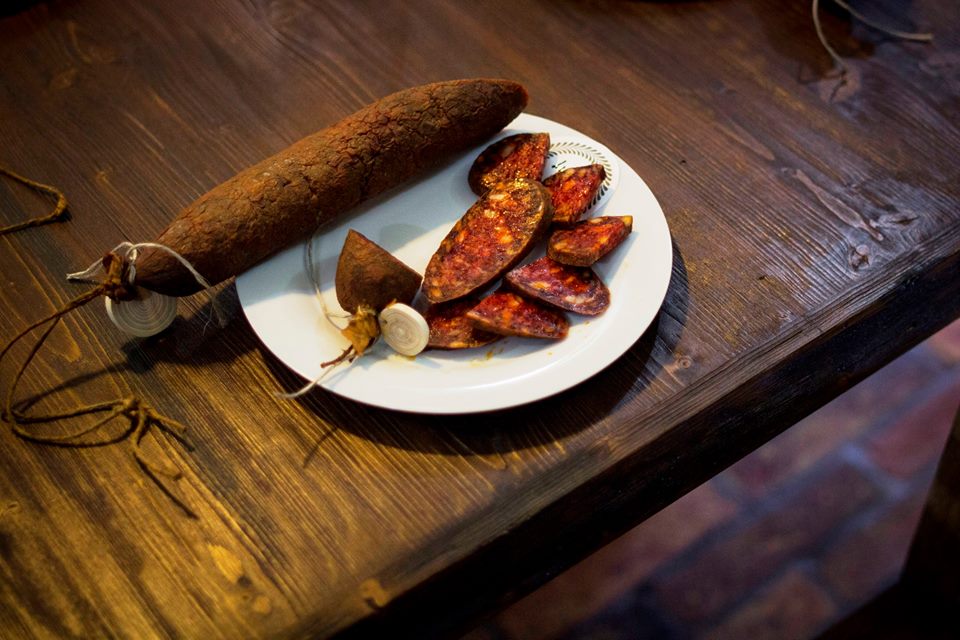Sausages are an iconic sight found almost everywhere across Budapest – hanging above food stalls at the Great Market Hall, served grilled on white paper trays at downtown butcher shops for a quick lunch, or sliced and shared at picnics on Margaret Island. Originally created as a way to make the most out of less-desirable cuts of meat, sausage evolved in Hungary to become a widely appreciated delicacy, and it is currently experiencing a local revival in popularity among Budapest’s foodie community, as new eateries keep popping up citywide that specialize in this treat of succulent meat.
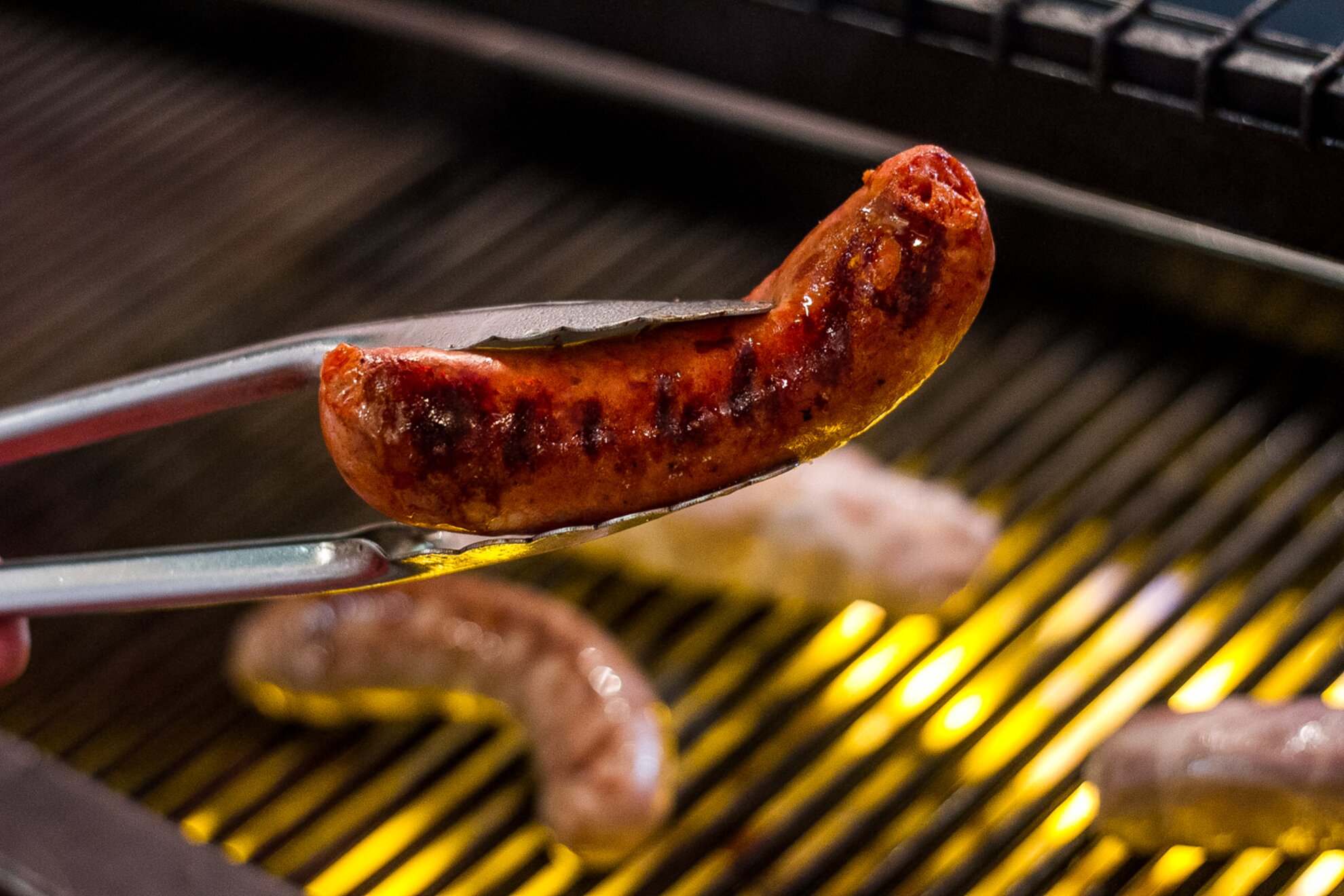
Sausage first became widespread in Europe during ancient Roman times, as the result of efficient butchery aiming to utilize every part of an animal – back in those days, sausages pretty much contained the leftovers from a slaughter, including organs, blood, and fat, which were garnished with various spices along with salt before the blend was stuffed into cleaned animal intestines. By using various cold-drying methods and curing processes for preserving the sausages, our ancestors could preserve them to remain edible for months, which was particularly important before the invention of refrigeration.
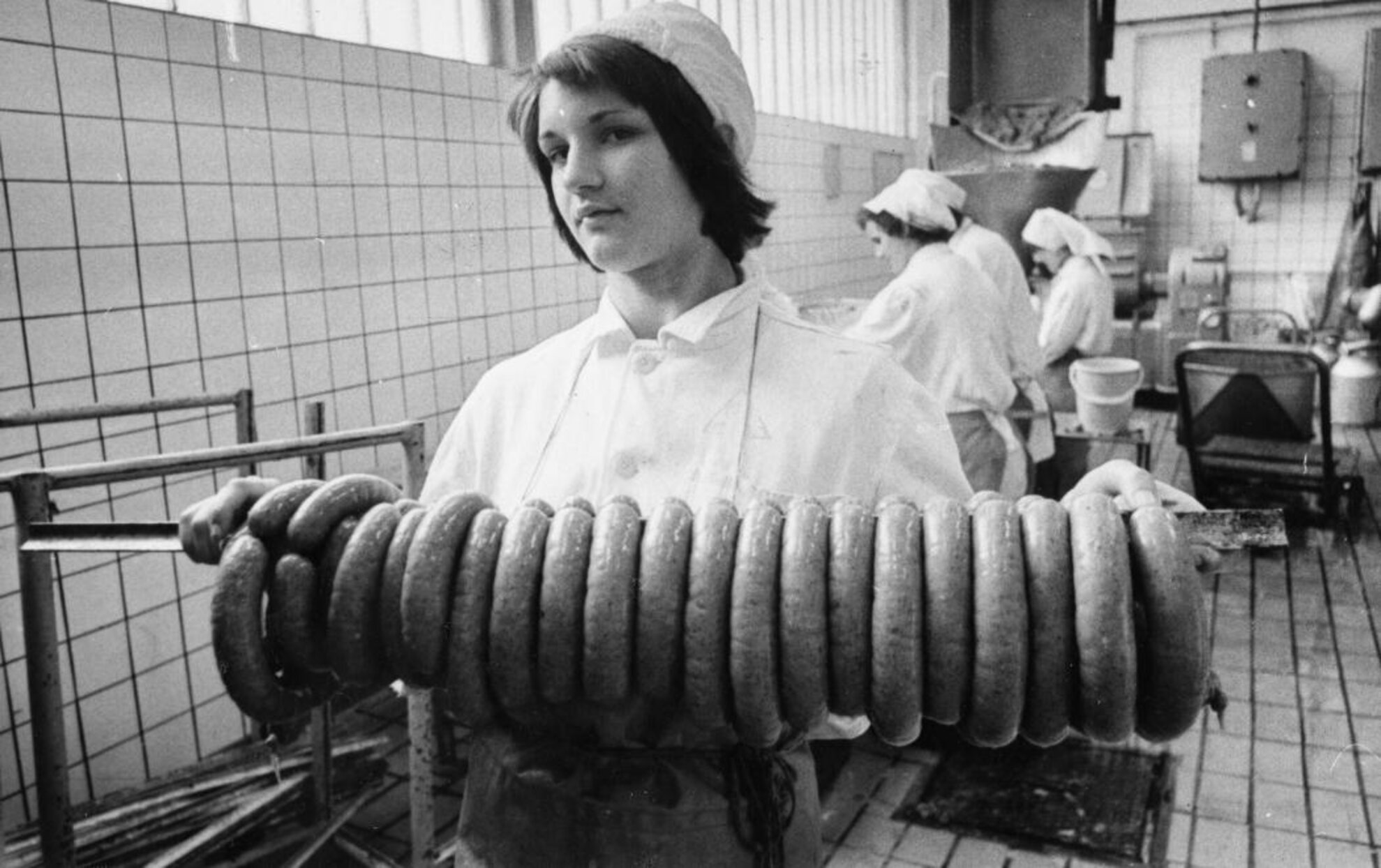
Harkening back to that time, luscious links are one of the main products of Hungary’s traditional pig-slaughtering feasts, a cherished rite of harvest season that dates back centuries. During these high-spirited meat-processing extravaganzas that last an entire day during the early wintertime across the Magyar countryside, families and friends gather at dawn to sacrifice a sizeable swine and use almost every part of it – from the legs to the belly to the shoulders to the head – to create provisions for upcoming months. Nowadays most people prefer to use lean meat as the main ingredient for sausage, mixed with varied amounts of fat to provide a juicy texture, along with powdered paprika, salt, pepper, garlic, and pinches of other ingredients like caraway or lemon rind to create varied tongue-tickling flavors. This savory fusion of complementary ingredients is stuffed into chitterlings (or artificial plastic casings) with a cylinder-shaped sausage-filling tool.
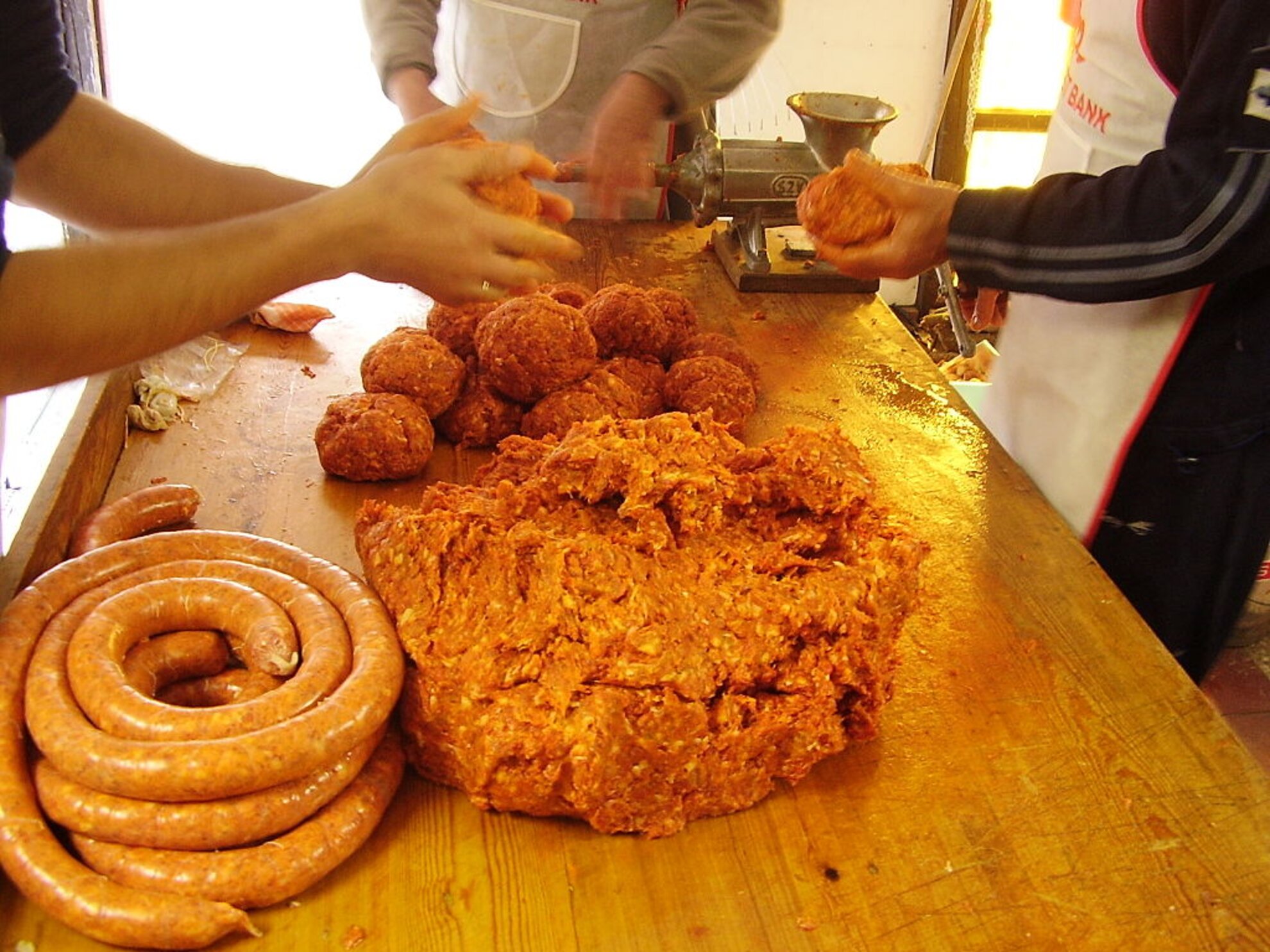
Usually a significant portion of freshly made sausages is fried in oil for immediate consumption, while the rest would be transferred to a smokehouse for preserving the toothsome bangers. Here rows of uncooked sausages hang from vertically aligned timber sticks at ceiling height to be soaked with smoke from smoldering sawdust. The multiple-day-long process reduces the moisture content of the meat and creates a protective layer on the surface, while splashing the sausages with a hint of brownish color and a fragrant smoky zest.
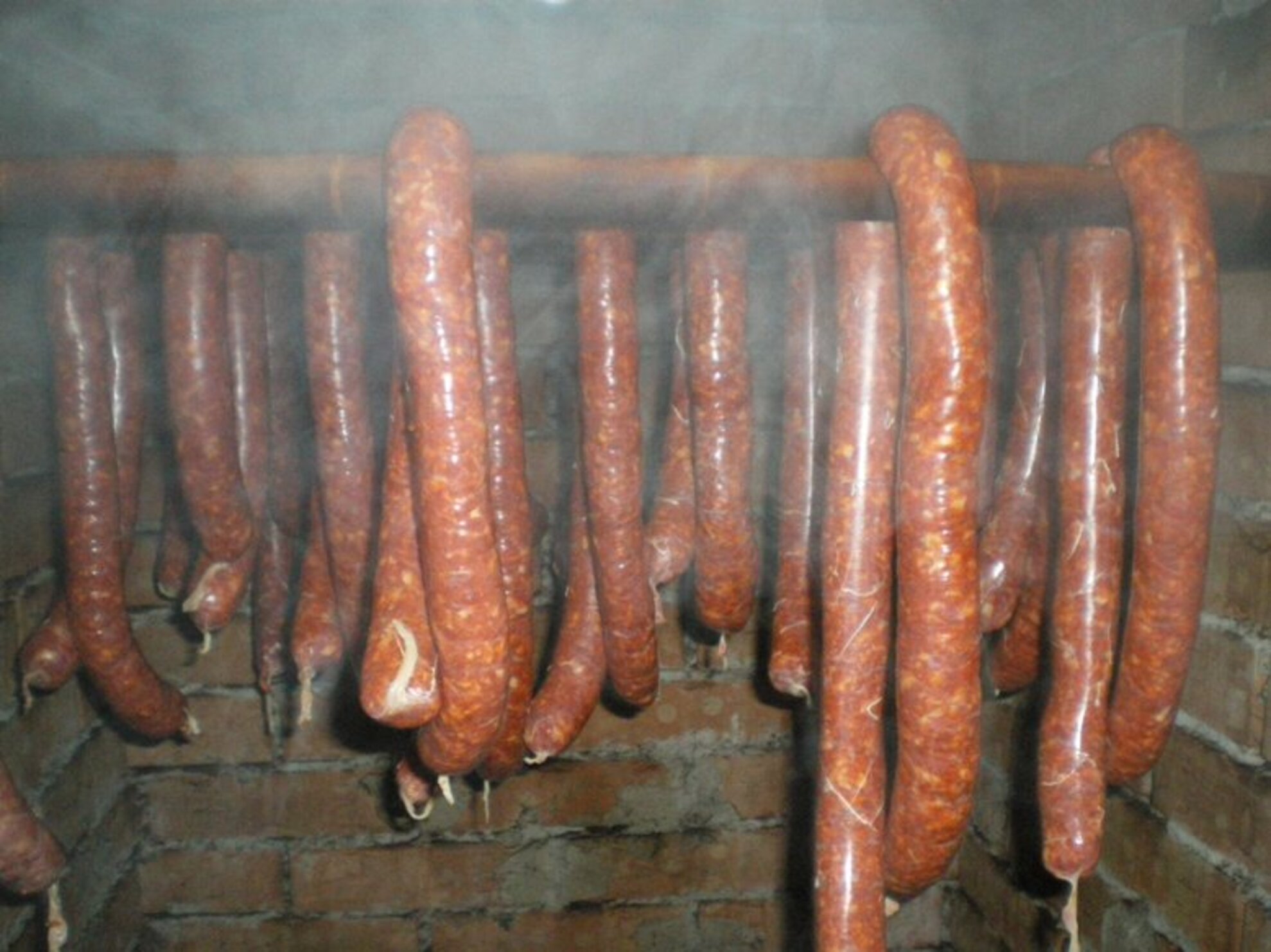
While kolbász (“sausage” in Hungarian) is a very common dish across the country, the stiffer and thicker locally made salami – mainly comprised of the same ingredients as sausages – is no less popular, although a main difference is that the meaty mixture is filled in the animal’s large intestines to help retain the salami’s moisture content for a longer time. To prepare sausages and salamis, Hungarians often use specific breeds of local livestock and game, including Mangalica (the Magyars’ prized native porcine species), Grey Cattle (a type of regional Hungarian beef), or even venison and horse, all providing distinct flavors. These ingredients are quite popular among locals, and are served at many festivals across the country.
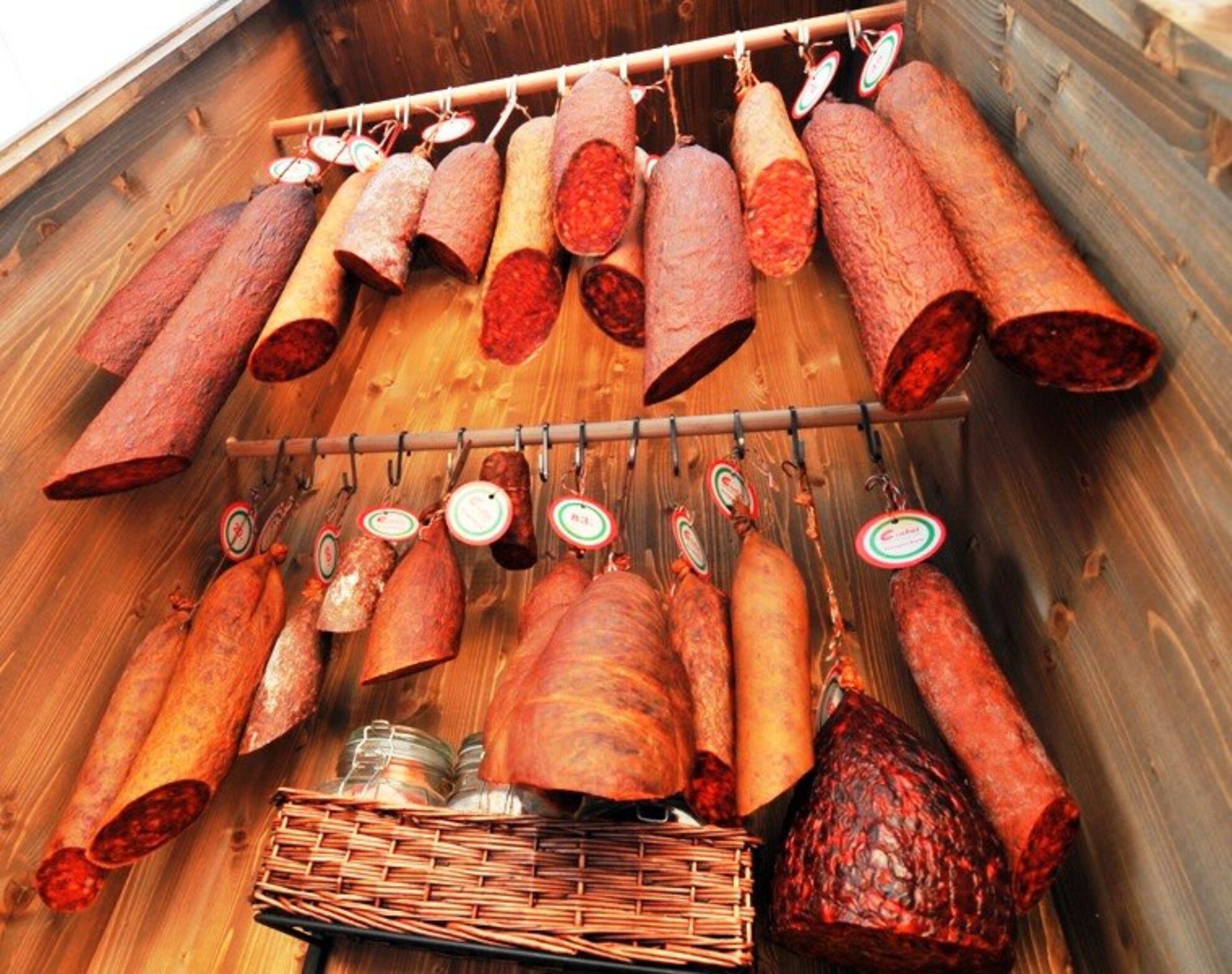
Some locally made sausages are named after the region of Hungary where they were first created, and the production of these brands is restricted to these specified areas: the spice-infused Csabai sausage and the paprika-soaked Gyulai kolbász cannot be produced outside of the southeastern cities of Békéscsaba and Gyula, while the finger-licking links marked with the Hartai title must originate from the village of Harta. The chunky Debreceni kolbász – commonly cooked as the centerpiece of dinners or heavy lunches – is named after the city of Debrecen near the country’s eastern border. Gyulai, Csabai, and Debreceni sausages earned designation as “Hungaricum” specialties in recent years.

Hungarians believe that the most succulent sausages and salamis are always homemade, but there are several renowned commercial brands offering various types of these filling links. Some of the best-known producers include Pick and Herz, with their mold-covered téliszalámi (“winter salami” in Hungarian) being a popular mixture of lean pork, fatty pork belly, and some secret spices. This flavorful minced meat is filled in casings, followed by cold-smoke curing, drying, and maturing phases.
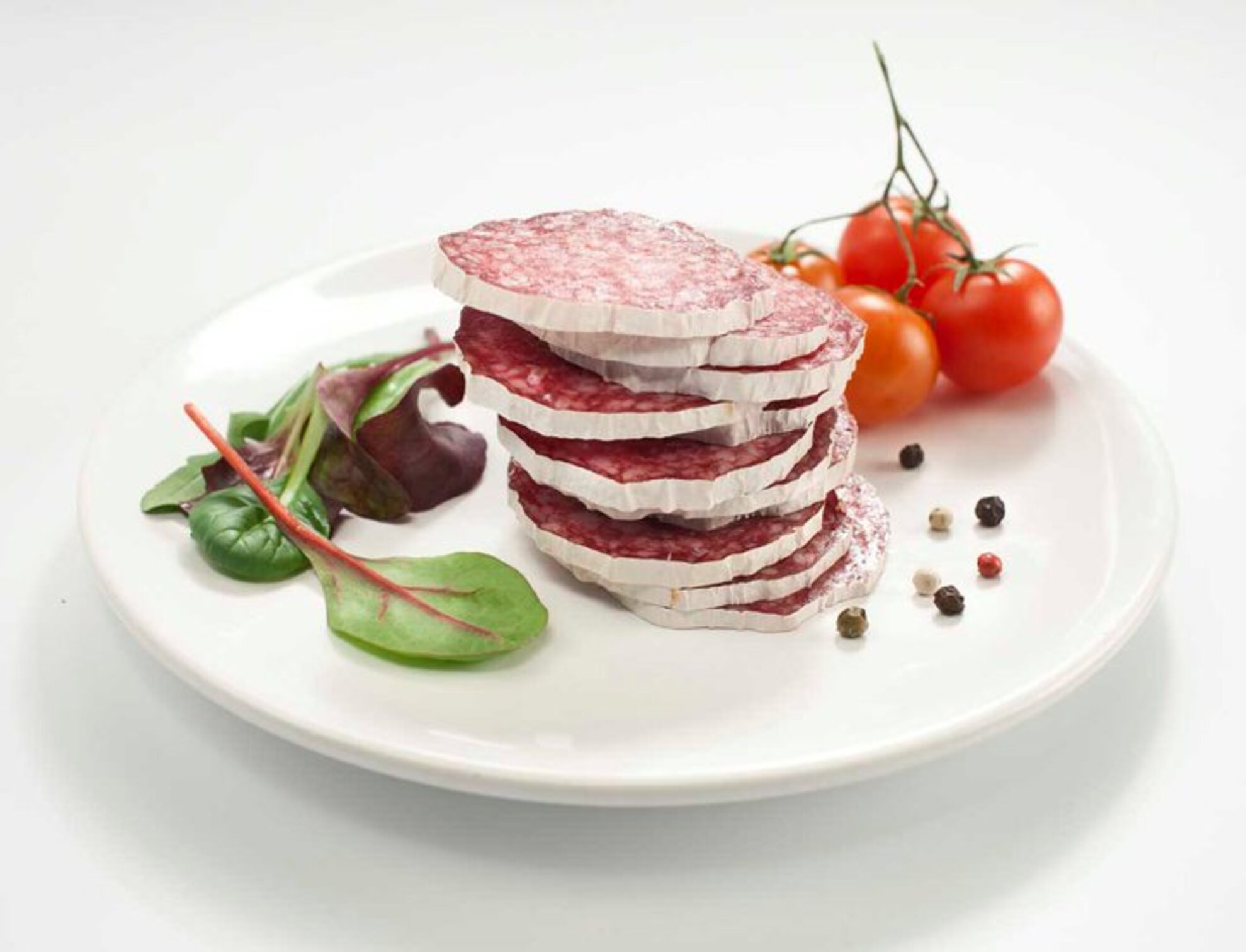
Anyone can get a taste of traditional Hungarian sausage heritage at this weekend’s Pig Slaughter Feast and Sausage Festival (October 16-18), held amid the sprawling parkland of the Hungarian Railway Museum in Budapest’s District XIV. There visitors can discover many of the country’s long-standing culinary customs while devouring delicious meals, and complement the massive meal with a few shots of pálinka – the nation’s fruit-based brandy, which is a necessary ingredient at traditional pig-slaughtering feasts to this day.Those who cannot attend this weekend’s food fair can sample mouthwatering sausage specialties all year round at numerous locales across Budapest. In the city’s District V, the recently opened Faszaládé eatery brings countryside flavors to the city center, proffering an intriguing variety of kolbász ranging from lamb to chicken to pork, all cooked on the restaurant’s open grill. The inventive team behind Kolbice serves small sausages in a cone-shape piece of bread with various sauces and toppings at several downtown sites, while TöLTő is a newly opened gourmet-sausage hotspot selling unconventionally spiced rarities with intriguing toppings in bustling District VII.
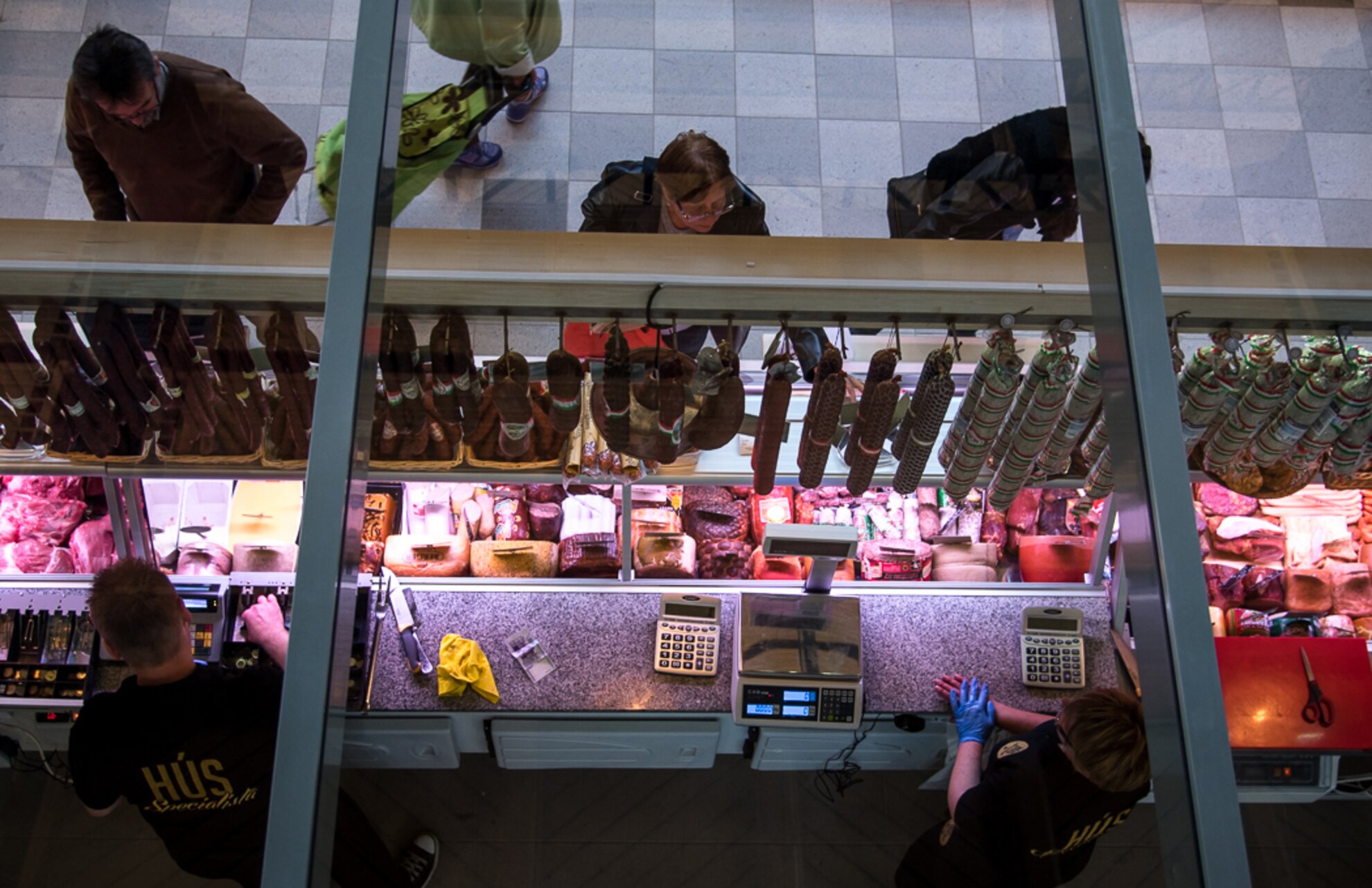
Meanwhile, Budapest’s classic food emporiums, including the Great Market Hall and the recently reopened Klauzál Square Market Hall, are ideal places to purchase traditional smoked sausages to take home, while Petró Butcher – Buda’s beloved meat sanctuary in District II at Margit körút 105 – provides smoked and fried sausages along with a variety of hurka (Hungarian boiled sausage). Additionally, many of Budapest’s fine-dining restaurants offer sausages as an appetizer or even a main course, such as Bock Bistro within the prestigious Corinthia Grand Hotel Royal on Budapest’s Grand Boulevard, offering savory lecsó (Hungarian ratatouille) infused with spicy sausage among the starters.
